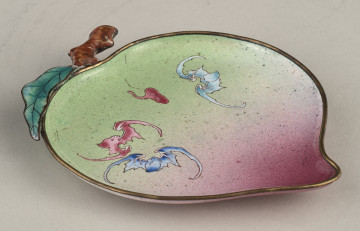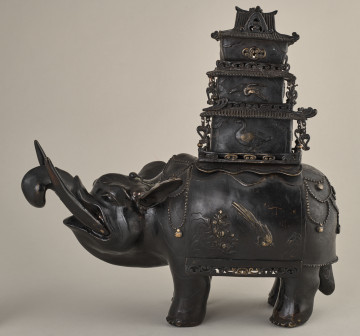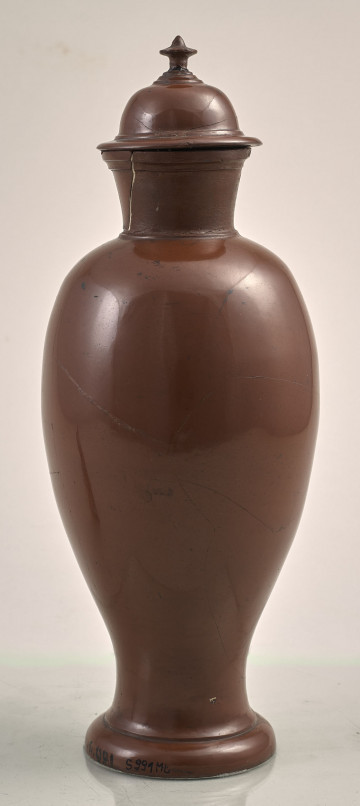
Saucer
18th-19th century
Castle Museum in Łańcut
Part of the collection: Orient
Figurine of the Lamaitic deity Amitayus. It is a representation of one of the emanations (incarnations, roles, functions) of Buddha. Gilt bronze, chiselled casting. The figure is seated on a throne chair in the so-called lotus position, with legs bent at the knees and feet crossed on the thighs. The joined hands rest on the feet and thighs. The figure has closed eyelids, it is static. Dressed in a long robe, chest girded with draped fabric, clipped at the shoulder. On the neck a necklace, ornaments on the forearm and wrists. Head decorated with a crown with vajra emblem, earrings in ears. Long hair, separated into two strands, falling on the shoulders. A throne in the form of a platform with an openwork base, without a backrest. The Buddha sits on an ornately draped cloth that adorns the front of the throne. The sculpture was made in China and was made for Tibet in the late 18th century. A figurine of cult and religious significance. Vajra (dorje) has several meanings. Here, in the form of a four-armed rosette, it represents the concept of the state of enlightenment. It is also a ritual object and a metaphor describing the construction of the world according to the Buddha’s teachings. It was originally shown in object form as a weapon of the mythical Indra and is described in the Rigveda, in the Vedas. The figurine was purchased for the collection in the 1980s.
Author / creator
Dimensions
height: 18.3 cm, width: 11.5 cm
Object type
Orient
Technique
gilding, fine detail finishing, cast
Material
bronze
Creation time / dating
Creation / finding place
Owner
Castle Museum in Łańcut
Identification number
Location / status

18th-19th century
Castle Museum in Łańcut

18th century
Castle Museum in Łańcut

20th century
Castle Museum in Łańcut
DISCOVER this TOPIC
National Museum in Szczecin
DISCOVER this PATH
Educational path